
BEGINNING English Exercises
CHERRY HILL

The mission of Storey Publishing is to serve our customers by
publishing practical information that encourages
personal independence in harmony with the environment.
Edited by Deborah Burns and Aimee Poirier
Cover design by Eugenie Delaney
Front cover photograph by Cherry Hill, back cover
photograph by Richard Klimesh
Text design by Cindy McFarland
Production assistance by Susan Bernier
Line drawings designed by Cherry Hill and drawn by
Peggy Judy
1998 by Cherry Hill
All rights reserved. No part of this book may be reproduced without written permission from the publisher, except by a reviewer who may quote brief passages or reproduce illustrations in a review with appropriate credits; nor may any part of this book be reproduced, stored in a retrieval system, or transmitted in any form or by any meanselectronic, mechanical, photocopying, recording, or otherwithout written permission from the publisher.
The information in this book is true and complete to the best of our knowledge. All recommendations are made without guarantee on the part of the author or Storey Publishing. The author and publisher disclaim any liability in connection with the use of this information. For additional information please contact Storey Publishing, 210 MASS MoCA Way, North Adams, MA 01247.
Storey books are available for special premium and promotional uses and for customized editions. For further information, please call 1-800-793-9396.
Printed in the United States by Versa Press
20 19 18 17 16 15 14 13 12 11 10 9
Library of Congress Cataloging-in-Publication Data
Hill, Cherry, 1947
Beginning English exercises / Cherry Hill.
p. cm.(Arena pocket guide)
ISBN 978-1-58017-044-4 (pbk. : alk. paper)
1. Horsemanship. 2. HorsesTraining. I. Title. II. Series:
Hill, Cherry, 1947Arena pocket guide.
SF309.H632 1998
798.23dc21
97-49043
CIP
Beginning English Exercises
Arena exercises are a cross between gymnastics, meditation, and geometry. They are essential keys for discovering many important principles about training and riding.
Goals
Develop rider balance
Find a steady rhythm
Establish energetic forward movement
Maintain left to right balance; ride straight
Learn the gaits
Walk
Posting trot
Sitting trot
Canter
Learn transitions
Walk to halt, halt to walk
Walk to trot, trot to walk
Trot to canter, canter to trot
Begin bending work
Riding a corner
Change of rein on the diagonal
Remember as you practice that it is the QUALITY of the work that is most important. It is a much greater accomplishment to do simple things well than it is to stumble through advanced maneuvers in poor form and with erratic rhythm. Keep your mind in the middle and a leg on each side.
How Can You Tell If the Work Is Correct?
Work regularly with a qualified instructor.
Ask a qualified person to stand on the ground, observe your exercises, and report to you what he or she sees.
Have someone record your exercises on videotape. Then watch the tape carefully using slow motion and freeze frame.
As you ride, watch yourself and your horse in large mirrors on the wall.
Without moving your head, glance down at your horses shoulders, neck, poll, and eye during different maneuvers to determine if he is correct up front.
Ultimately, the key is to develop a feel for when things are going right and when they are going wrong by utilizing all of the above feedback techniques. Answer the following by feeling, not looking:
 Is there appropriate left to right balance on my seat bones? Can I feel them both?
Is there appropriate left to right balance on my seat bones? Can I feel them both?
 Can I feel even contact on both reins?
Can I feel even contact on both reins?
 Is the front to rear balance acceptable or is the horse heavy on the forehand, croup up, back hollow?
Is the front to rear balance acceptable or is the horse heavy on the forehand, croup up, back hollow?
 Is the rhythm regular or does the horse speed up, slow down, or break gait?
Is the rhythm regular or does the horse speed up, slow down, or break gait?
 Is my horse relaxed or is his back tense?
Is my horse relaxed or is his back tense?
 Is he on the bit or above or behind it?
Is he on the bit or above or behind it?
 Am I posting on the correct diagonal?
Am I posting on the correct diagonal?
 Is my horse cantering on the correct lead?
Is my horse cantering on the correct lead?
 Can I tell when his inside hind leg is about to land?
Can I tell when his inside hind leg is about to land?
What Do You Do When Things Go Wrong?
Review each component of an exercise.
You may need to return to some very basic exercises to establish forward movement, acceptance of contact, or response to sideways driving aids. Returning to simple circle work will often improve straightness and subsequently improve lateral work and collection.
Ride an exercise that the horse does very well, such as the walk-trot-walk transition. Work on purity and form.
Perform a simpler version of the exercise. If it is a canter exercise, try it at a walk or trot first.
Perform the exercise in the opposite direction. Sometimes, because of an inherent stiffness or crookedness in a horse, you will have difficulty with an exercise to the left but no problems to the right! Capitalize on this by refining your skills and the application of your aids in the good direction and then return to the hard direction with a renewed sense of what needs to be done. I often find that doing work to the right improves work to the left.

EXERCISE 1
At the Halt
How to Evaluate Your Position at the Halt
Note: In each question, the desirable is mentioned first.
 Is your breathing deep and regular, or are you holding your breath?
Is your breathing deep and regular, or are you holding your breath?
 Is there equal weight on both seat bones, or is it difficult to feel one of them? Are your seat bones in the deepest part of the saddle, or are you braced against the cantle?
Is there equal weight on both seat bones, or is it difficult to feel one of them? Are your seat bones in the deepest part of the saddle, or are you braced against the cantle?
 Are your hip bones directly over your seat bones, or are they behind your seat bones in the Cadillac position?
Are your hip bones directly over your seat bones, or are they behind your seat bones in the Cadillac position?
 Is your lower back relaxed, or is it braced and tense?
Is your lower back relaxed, or is it braced and tense?
 Is your upper body above your hips, or is it leaning extremely forward or backward?
Is your upper body above your hips, or is it leaning extremely forward or backward?
Next page


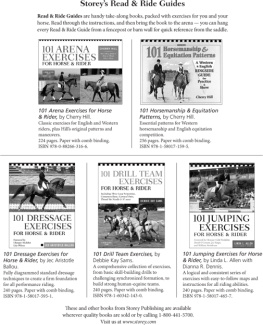
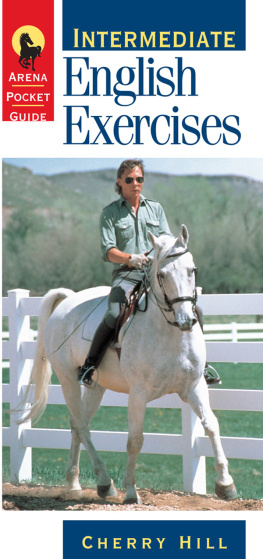
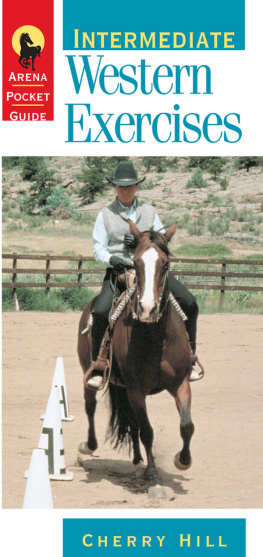
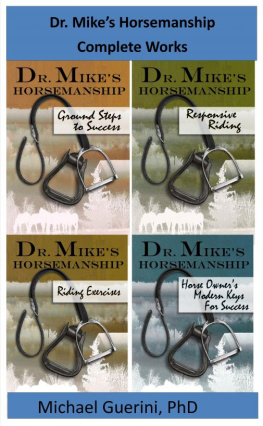
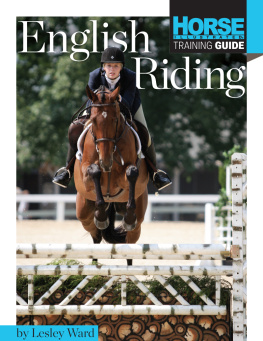


 Is there appropriate left to right balance on my seat bones? Can I feel them both?
Is there appropriate left to right balance on my seat bones? Can I feel them both?